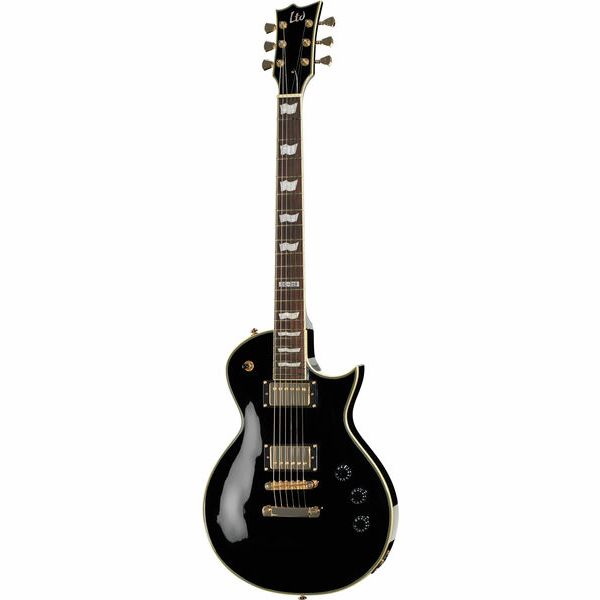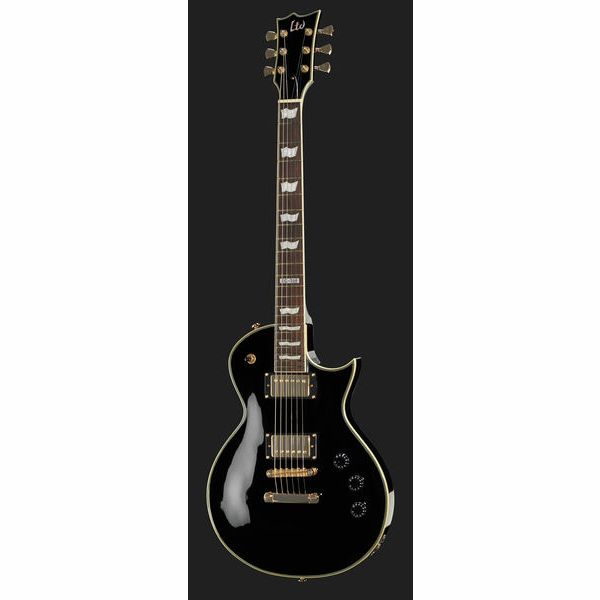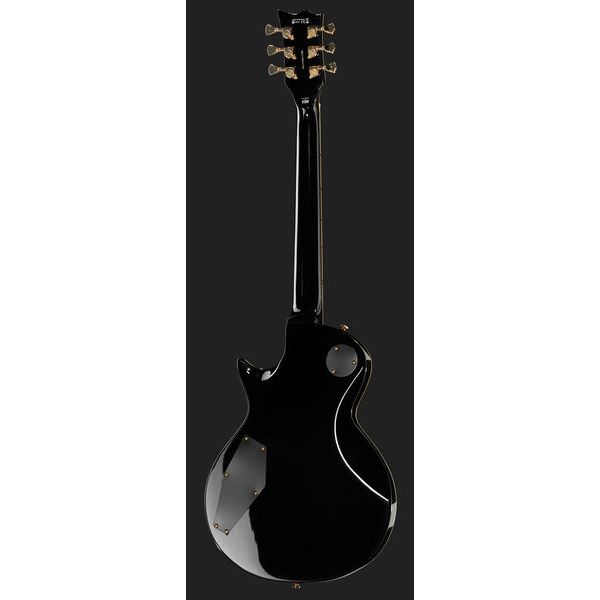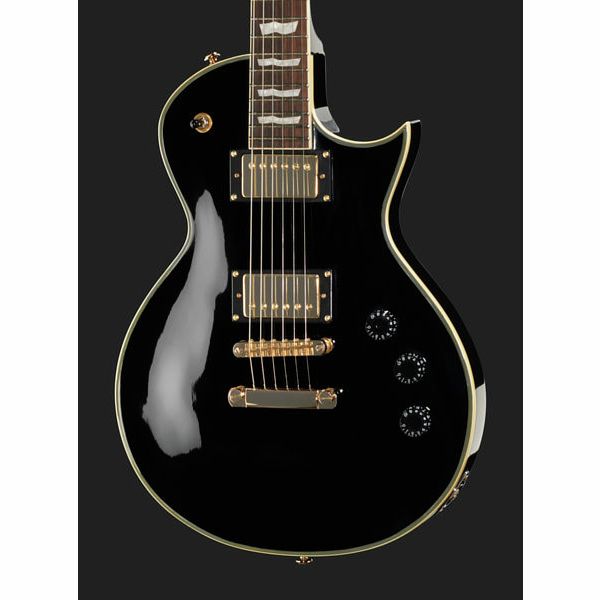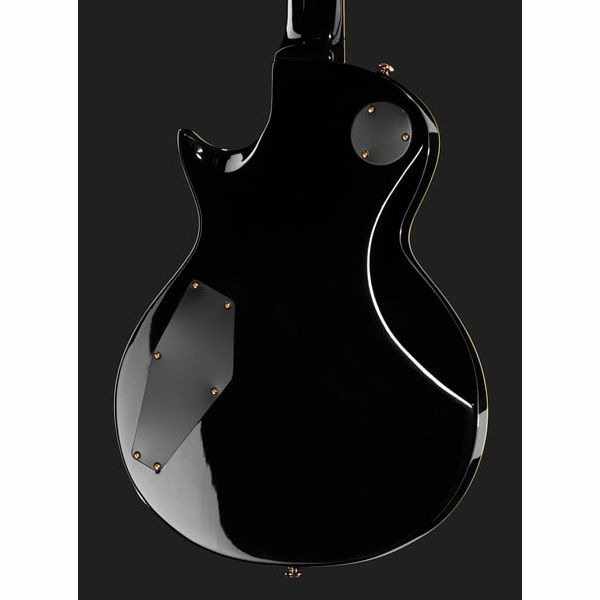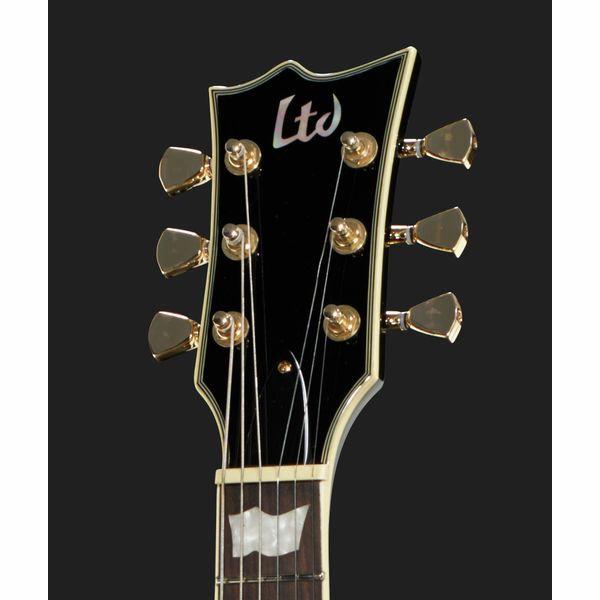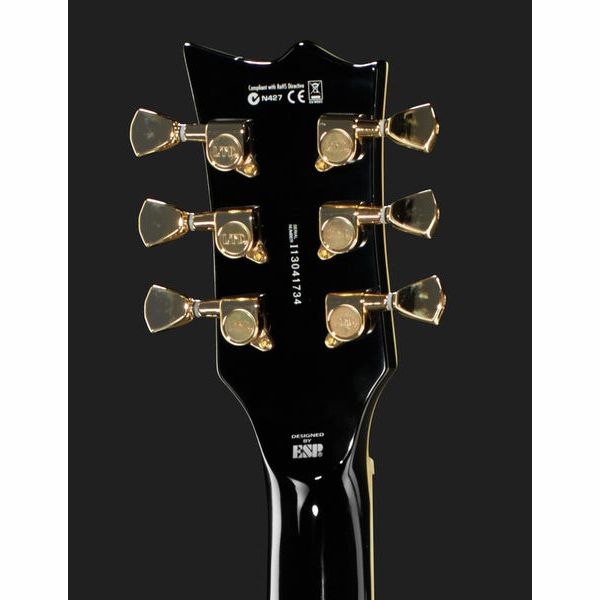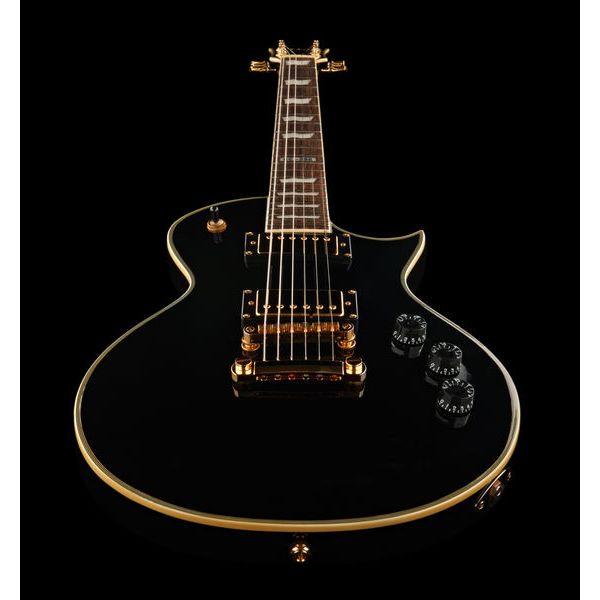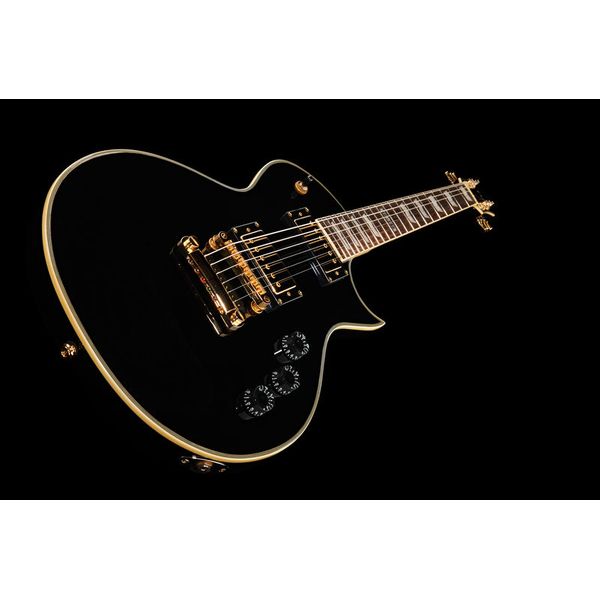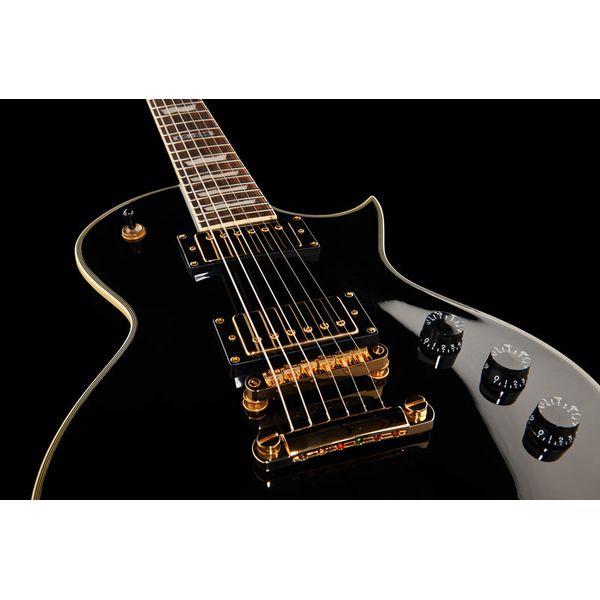ESP LTD EC-256 BLK
Le caratteristiche della chitarra ESP :
Mahogany body
Set-in mahogany neck
Jatoba fretboard
“Thin U” neck profile
Scale: 628 mm
Nut width: 42 mm
22 XJ Frets
Pickups: 2 ESP LH-150 (B & N) humbuckers with split function
Gold-plated hardware
LTD machine heads
TOM bridge and tailpiece
Colour: Black
In catalogo dal Marzo 2013
Numero di articolo 310106
Unitá incluse 1 Pezzo
Colour Black
Body Mahogany
Top
Neck Mahogany
Fretboard Jatoba
Frets 22
Scale 628 mm
Pickups HH
Tremolo
Incl. Case No
Incl. Gigbag No
Le casse (ESP LTD EC-256 BLK)
Si scopre che il tipo di cassa di risonanza ha un impatto sul suono della chitarra.
La cassa vuota
È perfetta per il chitarrista amatoriale. È molto legnoso e nitido.
La cassa semivuota
Offre un’identità pseudo-acustica con medi più distinguibili e una frequenza bassa. Di conseguenza, è ottima per suonare la chitarra con un piccolo amplificatore.
Cassa piena
L’impugnatura è semplice grazie al suo corpo sottile. Questo tipo di chitarra è richiesto per il rock.
Come scegliere la tua chitarra elettrica (ESP LTD EC-256 BLK)
Grazie al suo peso leggero, la chitarra elettrica è adatta a tutti i musicisti, anche a quelli che iniziano. È adatta a molti generi musicali tra cui:
- funk
- rock
- jazz
- blues
- metal
Guitar neck attributes (ESP LTD EC-256 BLK)
The size of a guitar neck can vary depending on the instrument.
This distinction may not be so noticeable, but it has an impact on string playability and therefore affects melodies.
A longer scale length
A longer guitar neck, like that of an Ibanez or Strat, intensifies string vibration and increases string tension.
A shorter guitar scale length
Since the strings are less tense and more flexible, playing becomes easier, as is the case with Les Paul guitars.
Electric guitar scale length
The scale length represents the distance of string vibration between the nut and bridge.
This dimension not only affects sound but also playability. In fact, a smaller scale length will feel more comfortable.
How many strings for an electric guitar? (ESP LTD EC-256 BLK)
Electric guitar strings are made of nickel or steel.
Musicians play them with a pick to avoid finger pain.
The 7-string electric guitar
The 7-string electric guitar is a model designed for metal players. The strings on these models are similar to those on 6-string electric guitars, but they have an additional lower-pitched string.
The 12-string electric guitar
The 12-string guitar was particularly popular among folk music bands in the 1960s. The vibrations are much more rhythmic. This 12-string electric guitar has the same tuning as a 6-string electric guitar, except that all the strings are doubled.
6-string electric guitar
This six-stringed guitar has three bass strings and three treble strings.
Microphone style for your electric guitar (ESP LTD EC-256 BLK)
When acquiring an electric guitar, it is also recommended to consider the pickups.
Pickups differ based on their winding.
You can easily distinguish:
- An electric guitar equipped with a single-coil pickup, like the Fender Telecaster, is more suitable for rock, country or blues.
- A guitar with a humbucker pickup, such as the Gibson, provides a higher output volume.
- An electric guitar equipped with both single-coil and humbucker pickups.
Main guitar body attachment methods (ESP LTD EC-256 BLK)
The way the neck is attached to the guitar body has a significant impact on the instrument’s sound. There are three main methods of body attachment:
- Bolt-on neck
- Set neck
- Gibson-style glued-in neck
Bolt-on neck
This method is more expensive.
However, it generally offers good value for money.
The neck goes through the guitar and becomes an integral part of the body.
As a result, it provides optimal vibration transfer.
Set neck
Promoted by Gibson and later by PRS, it enhances sustain and vibrato.
Gibson-style glued-in neck
Initially used by Fender, this method offers instruments in kit form, allowing for interchangeable parts. This attachment method gives a certain brightness to the guitar.
Main woods used in electric guitars (ESP LTD EC-256 BLK)
The choice of woods made by many luthiers affects the sound and resonance of the guitar. For the neck, the most common woods are mahogany and maple.
For the fingerboard, ebony, maple, and rosewood are most commonly used. Changing wood can easily alter tonality.
Below are two of the most common woods:
Mahogany
It offers a rather round sound with strong sustain on the guitar.
Rosewood
This dark wood with superior density and hardness is used for the fingerboard of the electric guitar and provides a fairly warm resonance.


